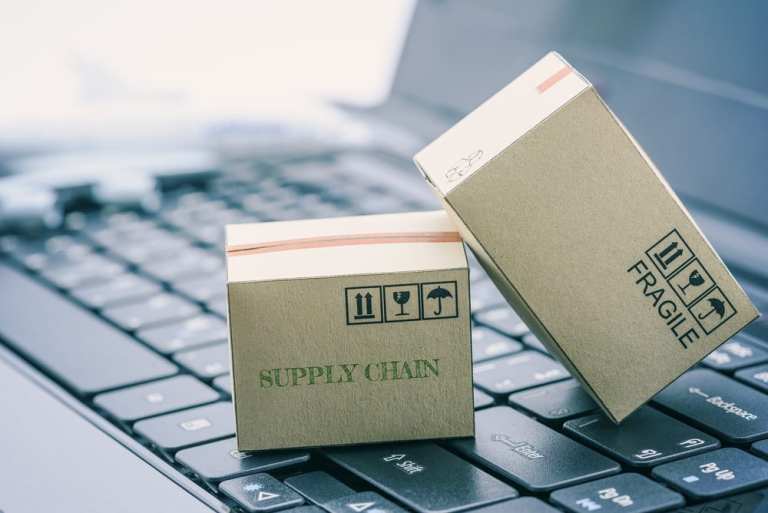The High Stakes Of Supply Chain Technology

Supply chain management has morphed into a strategic business initiative combining technological adoption, event forecasting and even politics: awareness of its complexities has never been higher thanks to threats of a trade war between the U.S. and China, and its resounding impacts on other areas of the planet.
But the c-suite has known for years that elevated supply chain management strategies can have a major impact on bottom lines. KPMG and JDA Software confirmed this in their recent report that found executives are ramping up their investments in supply chain technologies as part of their efforts to strengthen visibility and mitigate risks.
Choosing the right technology, however, can be as complex as the problems they’re designed to address, according to Trinamix founding and managing partners Amit Sharma and Molly Chakraborty. When PYMNTS asked about the biggest supply chain challenges businesses face today, they had no shortage of responses — and noted that these challenges can be traced at the very beginning of a business’s growth trajectory.
New companies evolve their processes based on the simplicity and chaos they encounter, Sharma explained.
“More often than not, the people that develop these processes have neither the maturity nor the vision to develop processes keeping in mind future scalability and complexity of the business,” he said.
In other words, taking the first steps to strategically managing a supply chain is challenging enough for a growing business, but failure to embrace technologies that can adapt and scale along with that company can be a disastrous mistake.
Both Sharma and Chakraborty pointed to a multitude of factors driving supply chain management challenges in today’s market.
In large part, growing consumer and end-customer demands reverberate through supply chains, leading to what the executives described as “cutthroat competition” across industries. In order to address consumer needs, firms must plan in advance, strategize about time-to-market and inventory postponement, and manage replenishment to operate a lean supply chain without excess, yet robust enough to fulfill demand.
Yet as organizations expand, this balancing act becomes even more difficult. Mergers and acquisitions add complexity as combined organizations tackle redundancies and smooth out overlaps while ensuring back-office infrastructures connect seamlessly. Expansion across borders, offshore manufacturing and outsourcing similarly introduce new risks of disruption to supply chains, they said.
“A typhoon in the Philippines or a tsunami in Indonesia or an earthquake in Japan destabilizes the supply chain of the entire globe,” Chakraborty said. “A potential trade war with China risks the entire globe to an imminent recession.”
And while smaller, growing companies can struggle to navigate these complexities, these challenges are “no less severe” for large organizations, she added, and on top of all of these common hurdles, industries like high tech, consumer packaged goods, industrial manufacturing and retail all have their sector-specific supply chain challenges to overcome, too.
Technology to the Rescue — Maybe
Technology is undoubtedly a key component to managing supply chains, developing and executing supply chain strategies, and mitigating supply chain risks. Both Chakraborty and Sharma pointed to tools like the Internet of Things, 5G, Big Data and predictive analytics, and blockchain as the “needs of the day” as demands to not only manage, but anticipate disruption weigh more heavily.
“Planners should plan well in advance for smooth flow of supply chain,” said Sharma. “Inaccuracy of [a] forecast is unpardonable.”
They noted the most effective supply chain technologies operate on a Software-as-a-Service model as organizations downsize their internal IT departments, and they urged businesses to embrace technologies that are mobile-friendly and prioritize security and transparency.
Innovators have ushered in Industry 4.0, they said, and today there is greater opportunity than ever before for businesses to not only tackle supply chain challenges, but overcome them in ways that add value to the enterprise.
But flashy, high-tech tools are, of course, not a catch-all solution to some of the most complex supply chain risks of today. Chakraborty said there are four key factors that can either help or harm organizations’ supply chain technology adoption: the vision and commitment to adopt technology by stakeholders, having the proper skills and resources to adopt these tools, having internal motivation to change, and developing a strategic action plan to support adoption.
Simultaneously, organizations must keep compliance at the forefront of their supply chain technology strategies, and — if the stakes weren’t high enough — falling short of strategic goals can lead to “confusion, anxiety, frustration, resistance and false starts,” she noted.
Yet in a period of some of the largest, most complicated risks global supply chains have seen, businesses that are able to step up to the plate will need to meet major challenges with an equally major focus on technological strategy.
“Making changes to existing processes to improve the supply chain is one of the major challenges a company faces,” Sharma said. “Change is hard to implement. A company that fosters continual changes to improve its process, [and that] adopts new technology in a well-architected plan and harbors a culture of adoption, is proved to be [the] most successful in coping with these challenges.”